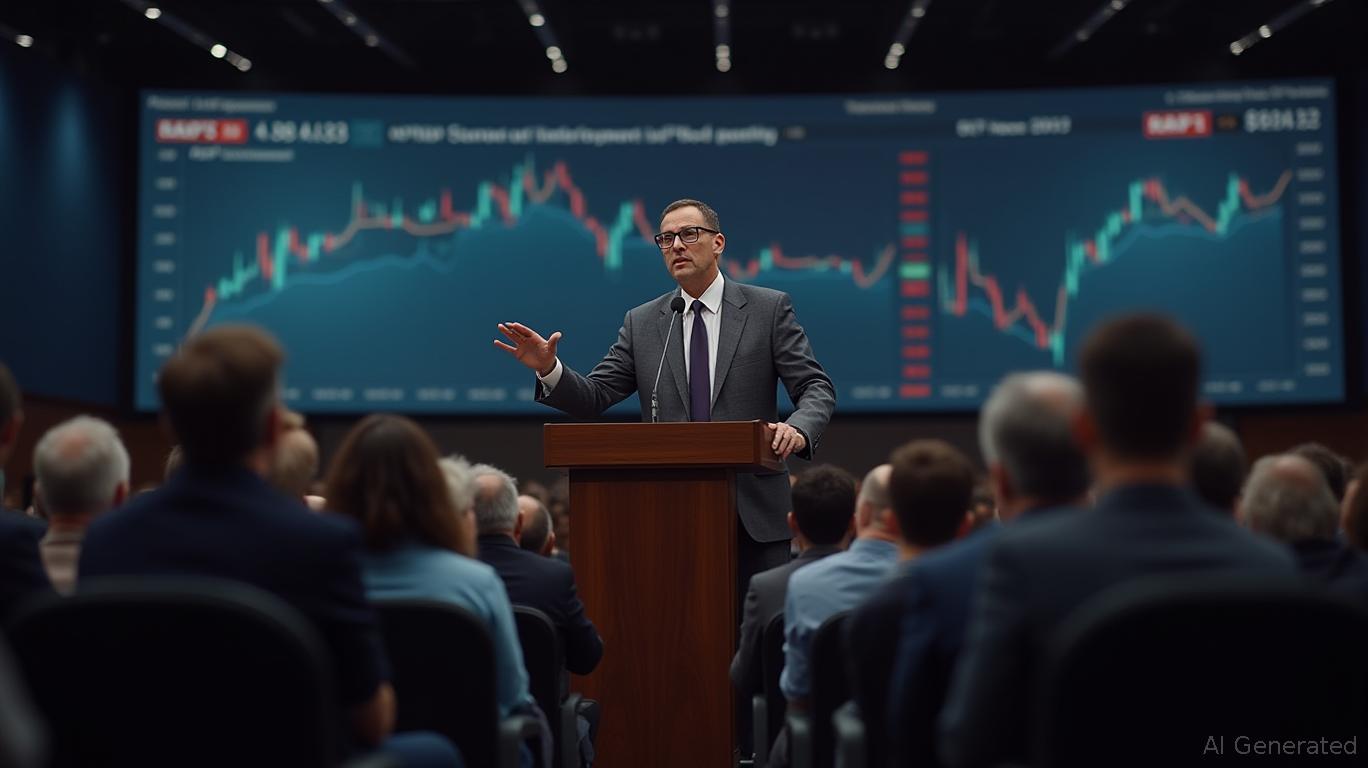ADP Bridges Data Gaps, Guiding the Fed’s Rate Cut Decisions
- The Fed plans a 25-basis-point rate cut at its October meeting, relying on ADP data due to delayed official labor reports from the government shutdown. - ADP ended its Fed data-sharing agreement but will now publicly share weekly employment data, amid strong Q3 2025 financials and a Pequity acquisition. - Labor market uncertainty persists, with the Fed using alternative metrics like state claims and ADP data, raising chances of further cuts in December and early 2026. - ADP's market influence grows as it
The Federal Reserve is expected to lower interest rates by 0.25 percentage points at its meeting on October 29-30, with traders assigning a 97.6% likelihood to this outcome, which would set the target range at 3.75%-4%, as reported by
The shutdown has also intensified attention on

The Fed’s dependence on ADP underscores the broader difficulties in assessing the labor market. Stephen Kates, an analyst at Bankrate, pointed out that the October CPI report, which came in softer than expected, gave the Fed “a boost in confidence,” though the central bank remains wary about the direction of employment, according to Yahoo. Bank of America analysts observed that the labor market is “at best stable, at worst showing mild weakness,” and the lack of official job reports has led the Fed to rely more on alternative data, such as state unemployment claims and ADP’s figures. This situation could impact the Fed’s December meeting, where traders now see over a 95% probability of another 25-basis-point reduction, as reported by
ADP’s recent strong performance—including a 26.32% operating margin and a market capitalization of $113.28 billion—makes it a key source of labor data in the current environment. Still, the Fed’s ability to make clear policy decisions is limited by the absence of comprehensive labor statistics, with Chair Jerome Powell stressing the importance of evaluating policy “meeting by meeting,” according to GuruFocus. As the December meeting nears, the interaction between ADP’s data and the Fed’s policy decisions is expected to influence market expectations for a potentially more aggressive rate-cutting cycle in early 2026.
Disclaimer: The content of this article solely reflects the author's opinion and does not represent the platform in any capacity. This article is not intended to serve as a reference for making investment decisions.
You may also like

From $620 to $6 Million: Dormant Ethereum Whale Wakes Up After 10 Years
$3,530,000,000 in 24 Hours, Midnight (NIGHT) Breaks Rare Milestone
$660 Million in XRP Shifts as Price Heads for Rebound